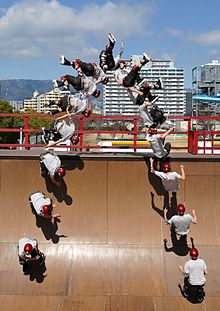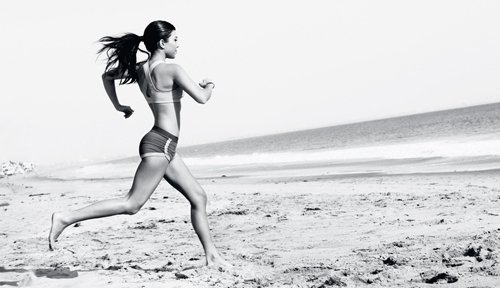 David is the best athlete I have ever known, and I’ve known many athletes. I met him when I was 12, and his athletic proficiency was clear even then.
David is the best athlete I have ever known, and I’ve known many athletes. I met him when I was 12, and his athletic proficiency was clear even then.
At the time, he had successfully convinced his dad to build him a halfpipe, and was learning “aggressive rollerblading” (it was the late 90s).
I went over to his house on the third day of his rollerblading career, and he had already mastered all sorts of grabs, grinds, and tricks. He had completed his first “720” that morning and was already pushing for a “900”.
It was impressive to say the least.
After a few weeks, he was doing flips, and got a sponsorship offer from some corporate scouts at a skatepark. At which point he decided rollerblading was no longer cool – it was time for him to take up skateboarding.
I’m sure you see where this is going. Within a week, he was a better skateboarder than anyone I knew.
 I told my parents about David’s prowess, and they didn’t seem to find it as impressive as I did. But they invited his family to a block party and got to see for themselves.
I told my parents about David’s prowess, and they didn’t seem to find it as impressive as I did. But they invited his family to a block party and got to see for themselves.
When David and his family arrived, I took them to meet my parents, but we lost David along the way. It only took a second to realize where he was.
He had climbed the nearest street light post and was hanging ~30 feet in the air. I was enthralled.
After his parents chastised him, and he slid nimbly down to earth, I asked “where did you learn to do that?”
His reply? “Just now. It looked like fun, so I tried.”
There are many more David stories like this one, but that’s enough to get us to the topic at hand.
The Mark of An Incredible Athlete
In school, we did push-up tests and timed miles to determine the best athlete. But those tests miss the point.
The mark of an incredible athlete is learning ability.
The skills of a sprinter are markedly different than that of a marathon runner. But a true athlete possesses a wide range of skills – balance, coordination, explosiveness, mechanics, etc. – that envelop all pursuits.
And beyond the simple skills, true athletes possess the ability to quickly determine which of their skills to apply, and how to apply them, for any specific endeavor.
You likely don’t strive to be a world-class athlete, but this ability can be learned, and can greatly improve your health, fitness, and happiness.
Lateralization of Skills is Changing Domains
Let’s say you’re a pretty decent sprinter. You regularly run intervals on the track at your local high school, you have your mechanics down, and your times have improved measurably over your former self.
How is your sprinting on the beach, in heavy sand? How about through shallow water, or even just up a hill?

Not the same as sprinting on a track.
Lateralization of skill means taking your carefully crafted expertise, and testing it in new environments, different domains. Building the neural networks to apply your proficiency in new settings. And it’s vital to being a fully-functional human being.
Because, for one, nature doesn’t care if you sprint best on flat, hard surfaces. But also because learning to adapt your skill set to new conditions teaches you how to adapt your skill set.
When you learn to sprint in sand, you’re not just getting faster at the beach. You’re also learning how to learn. The more you practice that learning ability, the better you’ll be at it.
Until eventually, you’re like David. Effortlessly applying your skills across domains – so it looks like you just know how to do everything.
Why Lateralization of Skills Improves Your Life
Even if you don’t fancy yourself an athlete, a complete life requires experiences across a wide range of environments.
Even just walking on flat ground is a highly technical skill – so if you ever want to go on a hike over varied terrain, you better be able to lateralize skills.
The better you are at lateralizing skills, the more you can do, and the lower your likelihood of injury.
And the neural robustness you develop will help you lateralize other skills effortlessly as well. You’ll be able to learn new technologies easily to stay relevant in the workforce. You’ll be able to converse with strangers (maybe even attractive members of the opposite sex) as if they were old friends.
And that strong, flexible brain you develop by constantly testing yourself across new domains will deliver a higher quality of life in your twilight years as your peers fade into a Jell-O and applesauce oblivion.
What Lateralization of Skills Looks Like
This video made the rounds on Facebook a few times now, but it’s a fantastic example of lateralization – and the awesome mental benefits that come along with it.
It’s a little long, but well worth the watch:
See how sharp and fit this man appears, even in relative old age? That’s the magic of lateralization of skills.
So get out there and try something new. Slacklining, trampolining, even just juggling will deliver big benefits.
Do you have any experience applying your skills across domains? Let us know in the comments!





[…] love lateralization of skills here. And slacklining (think tight-rope walking without the tight) is a great way to build a […]